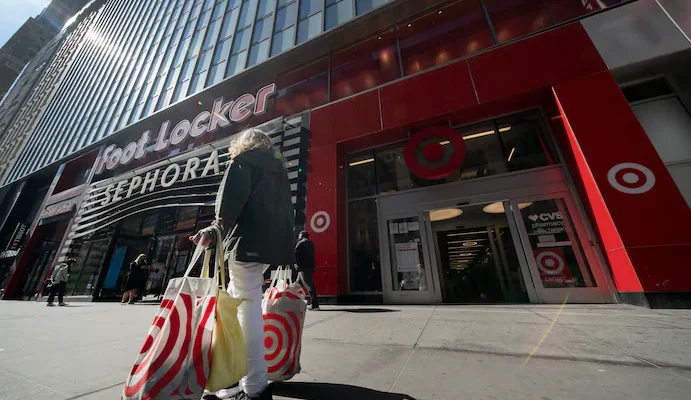Retailers sent a clear message to investors and analysts this week: Don’t expect much growth this year.
Companies such as Target, Abercrombie & Fitch, and Best Buy recently painted a gloomy picture for the upcoming year as consumers contend with stubborn inflation and potential fallout from President Donald Trump’s tariffs on imported goods. Other retail chains signaled weak expectations for consumer spending even before trade impacts hit.
Retailers want to proceed with caution as they weigh the volatility that tariffs and other economic challenges could bring, said John Mercer, head of global research at Coresight, a retail data firm. “There’s so much unpredictability that I think companies want to play it quite safe” with their financial projections, Mercer said.
Three U.S. retail chains said this week that they expect another year of consumer reluctance.
Macy’s projected that comparable store sales will fall slightly this year. Meanwhile, Best Buy predicted comparable sales growth of 2 percent or less.
That projection from Best Buy does not account for tariffs. However, Best Buy chief executive Corie Barry said during a call with analysts Tuesday that price increases are “highly likely” because of increased import costs and economic uncertainty in general.
Target forecast flat comparable sales growth for 2025 and said it will no longer provide quarterly profit predictions because of expected economic volatility this year. The discount retailer, which has stumbled in recent quarters, said its muted performance expectations reflect “a wide range of potential scenarios and uncertainty” and possible declines in consumer demand because of tariffs, chief financial officer Jim Lee told analysts.
Shares of Target and Best Buy fell 7.4 percent and 11.7 percent, respectively, for the week. Macy’s slipped just 2 percent but faces difficulties that go back years, and it is already in the midst of a restructuring.
Off-price retailers are often less exposed to tariffs because they source fewer products from overseas, Mercer said. But even those chains expect a challenging year.
“Rather than trying to predict what is going to happen, our approach is to manage our business conservatively and then be ready to pull back or to chase the sales trend,” Burlington chief executive Michael O’Sullivan said during an investor call Thursday.
Hesitation among relatively successful brands signals that retail growth could be slowing across the board, leaving less room for bargain retailers to carve out success, Gunther said.
“More affordable industries are performing better, sure,” he said. “But there’s a slowdown in off-price department store growth, as well, even though you might expect that to do a bit better.”

